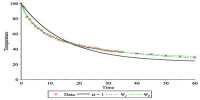Renewable energy is the energy that is derived from the earth’s natural resources that are not constrained or exhausted, such as wind and sunlight. Renewable energy is an energy that is collected from renewable resources that are naturally fulfilled over a human period of time such as sunlight, wind, rain, tides, waves and geothermal heat. Their costs are also declining and at a sustainable rate, where the general spending trend for fossil fuels is in the opposite direction even after their current volatility. Renewable energy often provides energy in four important areas: electricity generation, air and water heating cooling, transportation and rural (off-grid) energy services.
According to RN21’s 2017 report, renewable contributed 19.3% of human global energy consumption and 24.5% respectively to their electricity production in 2016 and 2016. This energy consumption is 8.9% from conventional hydraulic biomass, as thermal power (4.2%) (modern biomass, geothermal and solar heat), 3.9% from hydropower and the remaining 2.2% from biomass divided from wind, solar, geothermal and other types of electricity. Developing clean energy to tackle climate change and limiting its catastrophic impacts was the warmest year on the vital 2014 record. Earth’s temperature has risen 0.85 degrees Celsius on average since the end of the 19th century, the National Geographic on Climate Change said in its special November 2015 issue. There are an estimated 7.7 million jobs related to the global renewable energy industry, with Solar Photovoltaic’s as the largest renewable employer. Renewable energy systems are becoming increasingly effective and cheaper, and their share in total energy consumption is increasing. During the day, the sun provides warmth and helps to keep the fire burning in the evening. But over the past 500 years or so, people have become increasingly cheaper, cheaper, coal sources like coal and broken gas.
At the national level, at least 30 countries around the world already have renewable energy, providing more than 20 percent of their energy. National renewable fuel markets are expected to grow steadily over the next decade and beyond. Now that we have increasingly innovative and less expensive ways to capture and capture wind and solar power, renewables are becoming an even more energy source, producing more than one-eighth of the United States. Already more than 50 percent of the electricity is from renewable resources in at least 47 countries around the world. In contrast to fossil fuels, there are renewable energy resources in a wide geographical area, which is concentrated in a limited number of countries. Expansions of renewables are also occurring on large and small scale scales, ranging from solar panels on the roof to giant homes that can sell electricity to giant offshore wind farms. Even some entire rural communities rely on renewable energy for heating and lighting.
Although many renewable energy projects are large-scale, renewable technologies are also suitable for rural and remote regions and developing countries, where energy is often important in human development. One of the main goals of modernizing America’s electricity grid is to make it more precise, more secure and better integrated across the region as renewable use grows. Accordingly, electrification with renewable energy is more efficient and therefore leads to a significant reduction in primary power requirements.












